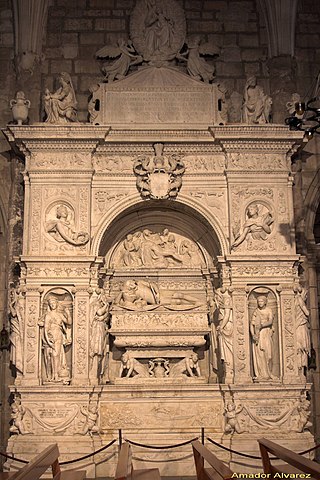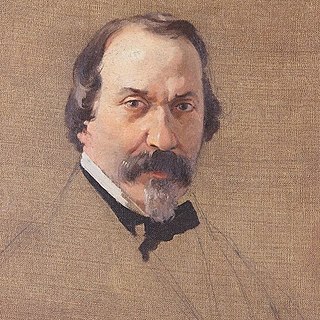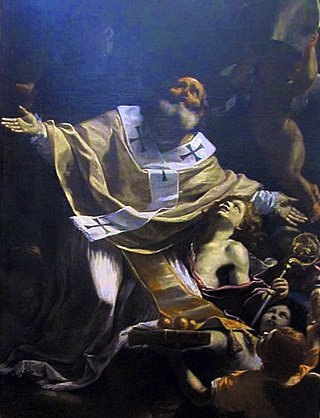This article contains information about the literary events and publications of 14th century.

Francesco Solimena was a prolific Italian painter of the Baroque era, one of an established family of painters and draughtsmen.

Orvieto Cathedral is a large 14th-century Roman Catholic cathedral dedicated to the Assumption of the Virgin Mary and situated in the town of Orvieto in Umbria, central Italy. Since 1986, the cathedral in Orvieto has been the episcopal seat of the former Diocese of Todi as well.
Bonvesin da la Riva was a well-to-do Milanese lay member of the Ordine degli Umiliati, a teacher of (Latin) grammar and a notable Lombard poet and writer of the 13th century, giving one of the first known examples of the written Lombard language. He is often described as the "father" of the Lombard language.
Annibaldo Caetani di Ceccano was an Italian Cardinal. His palace, the Livrée Ceccano at Avignon, begun in about 1335/1340, still survives; it is now a public library.

Lippo Memmi was an Italian painter from Siena. He was the foremost follower of Simone Martini, who was his brother-in-law.
Agostino Beltrano was an Italian painter active in the Baroque period in his native city of Naples. He was a pupil of Massimo Stanzione, the uncle of his wife, and is known to have been active in 1646. He is said to have murdered his 36-year-old wife and painter, Aniella di Beltrano, in a fit of jealousy. He died in Naples.

Giovanni da Nola (1478–1559), also known as Giovanni Merliano, was an Italian sculptor and architect of the Renaissance, active in Naples.
Annibale Caccavello (1515–1595) was an Italian sculptor of the Renaissance, active in his native city of Naples.

Stanislao Lista was an Italian sculptor active in Naples.

Antonio del Massaro da Viterbo, or Antonio da Viterbo, nicknamed il Pastura was an Italian painter.

Michele de Napoli was an Italian painter, mainly of grand manner historic and religious paintings in a Neoclassic style in Naples, Italy.
Raffaelle Spanò (1817–1863) was an Italian painter.
Salvatore De Renzi was an Italian physician and writer.
Lello is a surname. It may refer to:
Sir Antonio (di) Pessagno was a Genoese merchant and administrator. He is known mainly from his activities in England and France. He was the chief financier of King Edward II of England from 1312 until 1319.

The House of Gualterio is an Italian aristocratic family, with its first documented roots in the 12th century and links to France and the Stuarts. The Gualterio family has spawned various aristocratic titles including the extant Marquis of Corgnolo (1723) and, under the Jacobite peerage, Earl of Dundee (1705). The present head and heir to the titles is Luigi Gualterio.
John of Naples, also known as Giovanni Regina, was a Dominican friar and prominent Thomist theologian and philosopher in the early 14th century.

Alfredo De Marsico was an Italian Fascist politician who served as the last Minister of Justice of the Mussolini Cabinet from February to July 1943. After the war he continued his political career in the National Monarchist Party and later in the People's Monarchist Party.

Saint Nicholas is a c. 1653 painting by Mattia Preti, the first work he produced after moving to Naples and showing the three gold balls which are a traditional attribute of the saint. It is now in the Museo nazionale di Capodimonte in the same city. He also produced a larger version of the work in 1657 which is now in the Pinacoteca civica in Fano, with an early copy after the Capodimonte version now in the church of Santa Teresa degli Scalzi in Naples.











